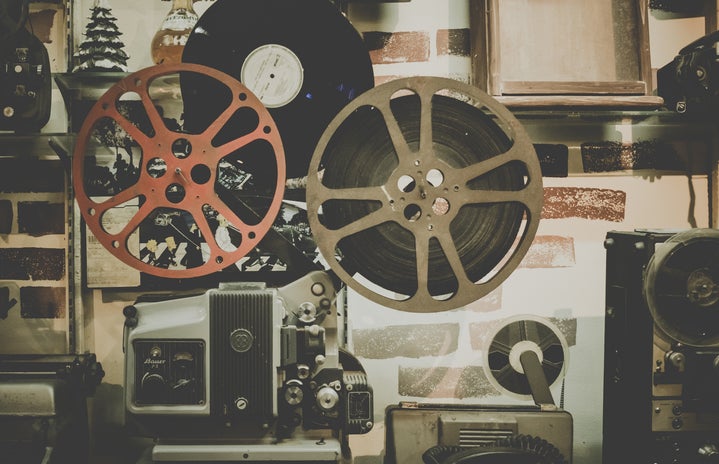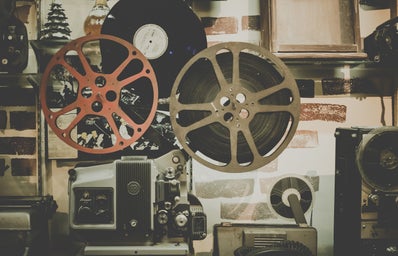Scary Stories to Tell on Set: Gender Inequality in the Film Industry.
Spooky season has finally arrived, and with it, all sorts of horror stories have aroused. Some, like Dracula, are scarier than others; however, no one compares to the one I am about to tell. This one does not even need a dark setting to lower your body temperature, provoking the tiny hairs on your arms to awake like witches and monsters every Halloween night. What makes this story so terrific is that it is, in fact, based on real events.
Are you prepared?
Gender Inequality in the Film Industry.
It is no secret that gender inequality, especially against females, exists. We see it in some schools, where girls are not allowed to play certain sports, such as football because they are considered “too harsh,” and we, “too weak.” In fact, when I was in high school, there was not a girl baseball team. We see it in politics, too; not only nationally, where, according to research conducted by the Center for American Women and Politics, only 23.7% of the total congress seats are held by women in 2019, but also globally. A recent study published by UN Women revealed that no more than 23.5% of parliamentarians around the world are women and that “just six Commonwealth member states have a woman [as a governmental leader].” As I mentioned, the numbers are terrifying. But the gender gap is not only massively threatening women in education and politics; in fact, there is a place, where, ironically, this problem does not get a lot of press: The Film Industry.
We’ve all experienced the pleasure that comes with watching our favorite movie on a rainy, cold day while drinking a big cup of coffee, or hot cocoa, or the excitement of going to the movie theater with our family to see that film that we waited an eternity for. It has happened to me a couple of thousand times, especially with movies like Beauty and The Beast, The Lion King, and Aladdin. I can’t blame us; movies are one of the simplest, yet wonderful, pleasures in life. But what happens when we go a little bit deeper, or, as commonly said, “behind the scenes.”? I’ll give you a hint: that pleasure diminishes.
Women on Screen
I’ll be straight forward: women do not get equal representation on screen, behind it, or outside of it. A study conducted in 2017 by the New York Film Academy revealed that in the top 900 films, from 2007-2016, women only represented 30.5% of all speaking characters. Moreover, 25.6% of them were depicted wearing “revealing clothes,” while only 5.7% of all male characters were required to do so. A year later, a similar trend was observed; Out of 1000 films studied, women obtained no more than 15,000 dialogues. In contrast, men obtained more than 37,000. These data, collectively, show that women are not being given a voice, figuratively and non-figuratively. Their voices are many times shut so their bodies can show. Women are most of the time not depicted as leaders, but as sexual objects. This, when looking deeper, can affect their self-esteem as they try to meet certain body standards, which are, in fact, very strict and irrational, to at least obtain a small role.
An example of this is Amanda Seyfried. The actress, better known for her roles in Mamma Mia and Letters to Juliet, revealed in an interview with Ellen DeGeneres that she was denied many movie roles due to the size of her breasts. Seyfried also admitted that, in an attempt to reduce their size and look thinner overall, she felt forced to lose 10 pounds.
Like Seyfried, there are many other actresses that have been pressured to change their body image to gain entrance to the industry. Among them are Jennifer Lawrence, Ashley Benson, and Emily Blunt.
The Nightmare Behind the Scenes
The inequality seen on screen is only a small part of the overall horror story. Women are also targeted behind the scenes, where they are not given many opportunities to work as executive directors, cinematographers, or writers. According to research conducted by San Diego State University, out of the top 250 movies released in 2017, only 12% were directed by a woman. The same study also found that no more than 17% of those films had female writers, and only about 4% of them hired women as cinematographers.
The numbers are indeed scary, but they allow us to find a correlation between the number of women behind and on screen.
How can we expect to see more women playing main characters in movies when they are not even allowed to be in charge of giving those roles out?
Scared now? Trust me, the worst is yet to come.
Paranormal Payment Activity
Besides facing a lack of representation on and behind the scenes, women are also subject to unequal payment. In 2017, Forbes made a list portraying the top 20 highest-paid actors in the industry. The results, of course, did not favor our women. Only 3 of the 20 on the list were females: Emma Stone, Jennifer Aniston, and Jennifer Lawrence. Moreover, when comparing the gross income of Mark Wahlberg, the highest-paid actor, to that of Emma Stone, the highest-paid actress, it was found that Wahlberg made 42 Million dollars more than Stone. Many will claim that this difference could be due to the type of character, main or secondary, they played; however, after some research, I found that they had both played leading in 2016 and 2017. This is very concerning and saddening.
Can you imagine what it must feel like to put all your heart and effort into a project, go entire nights without sleep, feel pressured to change your own body, and still not be justly compensated?
But this horror story does not end here. In addition to the atrocities already mentioned, there is one last thing that, even though it does not get a lot of press, is crucial mentioning.
Hocus Pocus: Where is my Oscar?
When it comes to awards ceremonies, such as the Oscars, women are also at a disadvantage. A report created by the Oscars Women’s Media Center demonstrated that ever since the first Oscars award ceremony in 1928, only an average of 16% of women is nominated each year. Furthermore, for non-acting categories, from 2005 to 2016, more than 80% of all nominees are men. Again, the lack of representation, especially in award nominations, can really negatively impact women’s self-esteem, many times making them question their own skills. Moreover, spectators might infer that the small number of women nominees demonstrates a lack of talent, when, in fact, the numbers only reveal that the industry is not doing a great job integrating women.
The lack of women playing leading roles in movies and their production is, without a doubt, emotionally painful; especially for those of us who dream about a world where people are not judged by their gender, race, or sexual preference but by their character and soul.
The major points of this controversy have been discussed. Now, it is time to find a happy ending for this story.
Solutions
Many things can be done to save our damsels in distress from the dangers of inequality. Some of them, in fact, are already starting to be implemented.
- Increase the number of women behind the scenes:
- As mentioned before, the low number of women playing big roles on the screen is correlated to the percentage of them as cinematographers. Therefore, if they start obtaining jobs as directors, executive producers, and writers, they will also gain more control and power to assign leading roles to other women. In fact, the study conducted by the New York Film Academy demonstrated that 5.4% of the movies released in 2017 that were directed by a woman showed an increase in female representation on the screen.
- More press:
- Even though gender inequality in the film industry is a big problem, it does not get a lot of press. As I was searching for information to write this article, I noticed that there were not many articles on the controversy, and the very few that contain relevant information were dated not later than February of this year. Allowing people to know more about this topic could potentially create a chain reaction of people coming together to pressure the industry into being more inclusive and fair practices.
- More activism:
- It is not a secret that many of the rights that we possess today, such as suffrage, have resulted from women coming together for a common cause. While many actresses have expressed their discontent with the film industry, some have remained quiet. If more of these powerful and talented women formed interest groups, collected signatures, and took the matter to the appropriate people, they, without a doubt, could overcome the gender gap in the film industry.
As mentioned, many other solutions could resolve this problem; some smaller than others but equally important. It is time to act, to protect ourselves, to close the gender gap everywhere, once and for all.
Let’s trick or treat for Gender Equality.



